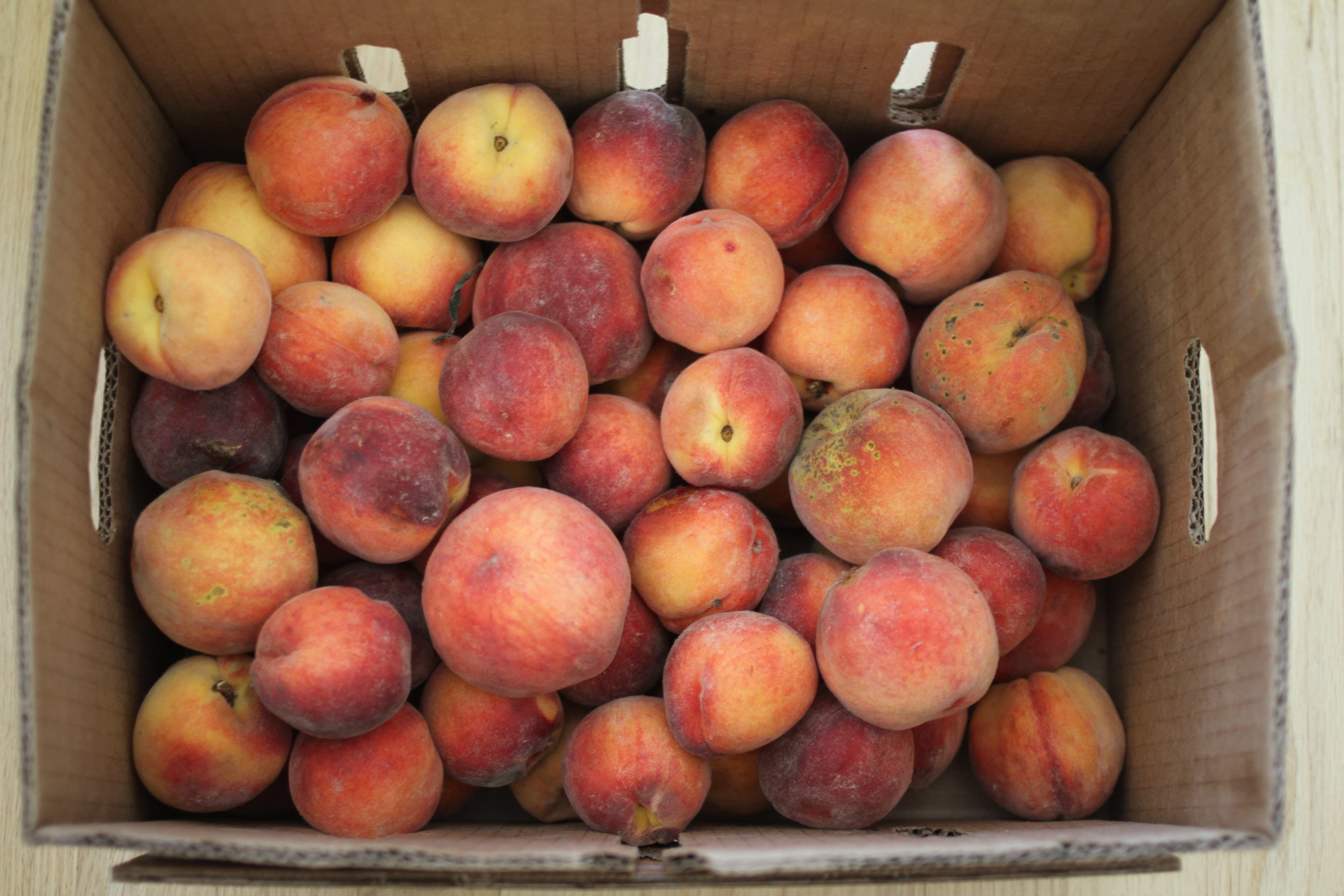Homemade Peach Jelly

I have an old manuscript from Italy from 1909 that explains how to preserve fresh fruit. It gives instructions on how to can fruit in a simple syrup of sugar and water, how to make jelly, how to preserve fruit in vinegar or in alcohol and how to dry fruit in the sun. I found the process they used to make jelly interesting as it explains how jelly prepared with their method is very different than how the English prepare jam, which they say differs because sugar is added to the fruit in the beginning of cooking. The Italian jelly is made by boiling down the fresh fruit with no sugar or pectin, then adding sugar when the fruit has thickened and jut cooking for a few minutes more before canning.
We asked the local farmer at the market if he could bring us a box of seconds each week for a few weeks. We paid considerably less but we had to get them cleaned and cooking as soon as we got home.
I had my 9 and 12 year old daughters do the peeling and cleaning. They complained a little at first, but after a few minutes, they were talking and laughing like two friends at a coffee shop. They broke the pieces of peach in an extra large saucepan with their hands. We used our largest saucepan because I learned it Italy that helps the juices to evaporate faster. They peeled about 40 peaches for each batch which yielded five 10 oz. jars of jelly.
We cooked the peaches uncovered on low heat for one hour and 15 minutes to thicken to the right consistency. After the peaches had been cooking for about 30 minutes, we used a potato masher to break up the larger pieces. We then weighed the cooked fruit so we could calculate how much sugar to add. The manuscript recommends 500g of sugar for each 1000g of cooked fruit or 50% sugar by weight. We actually reduced this to 300g for each 1000g of cooked fruit, roughly 30% sugar by weight, but note that the sugar helps to preserve the jelly once you open the jar and when you have less sugar, your jelly will turn moldy in the refrigerator quicker. For us it is not a problem, because we know in the winter when we open a jar, it will be gone in a few days.
Our fresh peaches yielded 1400g of cooked peaches before the sugar was added. When you choose not to use pectin, the jelly does not gelatinize and stays thin. We think it tastes better this way, but if you like a peanut butter and jelly sandwich, it would definitely run out when you squeeze together the slices of bread. We like to spread a jelly like this on a piece of toast in the morning.
This old manuscript I have uses an open kettle canning method for pasteurizing the jelly, which today is not recommended by most. To seal the jars, you must first sterilize them in boiling water, wash the rings, fill the jars, close them and then process in a hot water bath for 20-25 minutes.
We are not experts in canning, but we love cooking and we especially love making memories in the kitchen. It may seem like a lot of work to can, but one box of peaches made five jars of jelly today and that took the three of us about two hours from start to finish. We added handmade labels and this winter, we will remember this great summer when the flavor of our favorite peaches comes back to life at breakfast.
We think this site offers some great information about canning. Are you canning this summer?





0 Comments